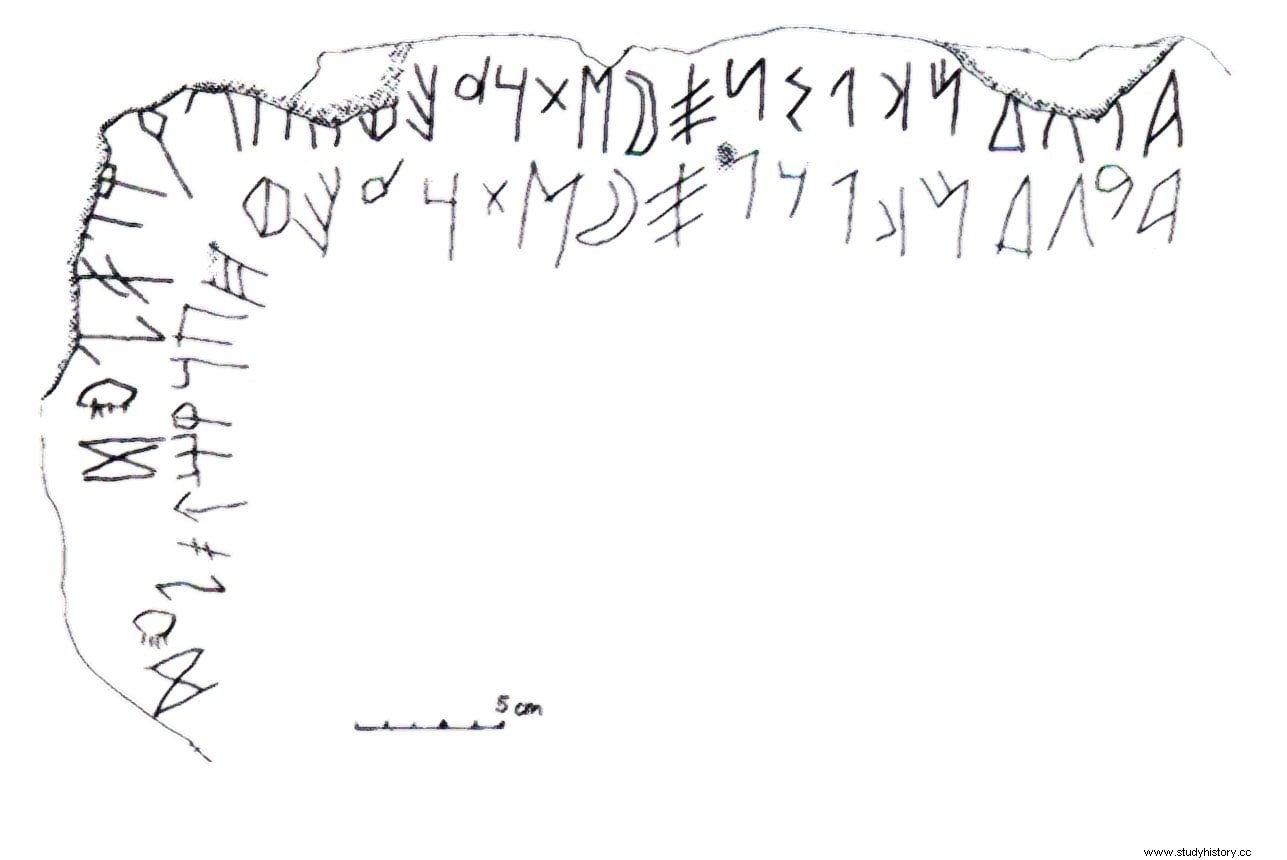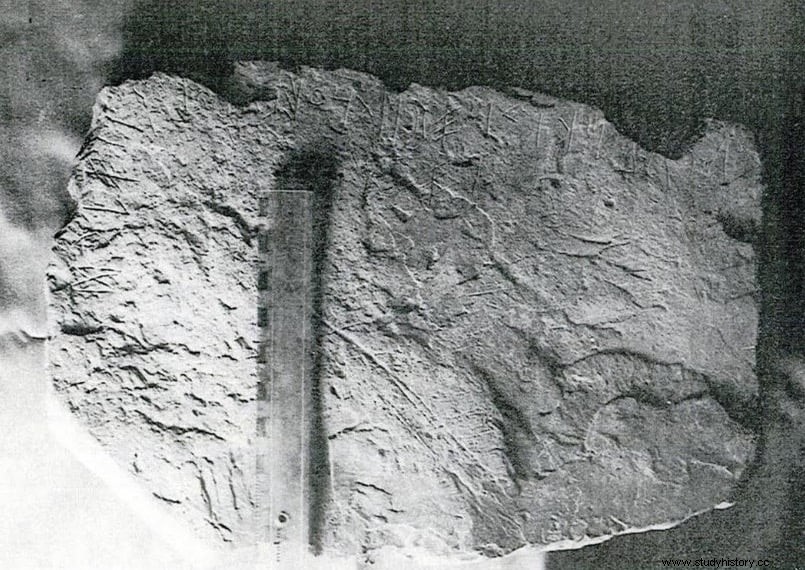The signary of Espanca was the first Paleohispanic alphabet found in the Iberian Peninsula, but it still raises more questions than answers.
Previously, only one other alphabet had appeared, but in Latin characters, that of the Celtiberian sanctuary of Peñalba de Villastar, in Teruel.
There is little information on how the discovery was made. It is known that it appeared out of context, not as a result of archaeological excavations, and therefore a minimally reliable dating has not been possible.

It was found at the end of the 1980s near the town of Espança in the Portuguese Lower Alentejo, and it is a small piece of slate measuring 40x28x2 centimeters that presents, fragmented, two parallel lines with the same sequence of 27 signs in which none repeat.
It is associated with the Tartessian or Sudlusitanian script, although in reality it does not coincide with any of the known scripts for other registrations. What is known is that the first 13 signs (read from right to left) coincide with the order of the Phoenician alphabet (𐤀 𐤁 𐤂 𐤃 𐤉 𐤊 𐤋 𐤌 𐤍 𐤎 𐤏 𐤔 𐤕 / a, b, g, d, y, k, l, m, n, s, r?, sh, t). The remaining 14 signs include some that are recognizable as Phoenician (𐤅 𐤄 𐤈 𐤇 𐤐 𐤑 𐤒 𐤓 𐤆), but out of order, and others that seem invented, along with some clearly related to the more modern southern Iberian script.
Other signaries found later, such as the one from Castellet de Bernabé, the one from Tos Pelat or those from Ger and Bolvir, present ordering of signs that do not coincide with the one from Espanca, which is therefore unique in this sense.

The most accepted hypothesis establishes that it must have been a late signatory, a kind of teaching exercise of writing, in which the teacher traced the signs on the upper line and the student repeated them on the lower one. This is deduced by the higher quality of the stroke of the former.
Some authors point out, however, that the fact that the support for the inscription is a slate slab with an uncut surface does not fit with its pedagogical use. Added to the inconvenience of its transport and handling is the fact that it is not suitable for writing on, especially using the sgraffito technique with which the signs are made.
Javier Velaza believes that other hypotheses should be considered, such as the lid of an urn, or an element related to a sacred construction. That the signary was copied by a second hand would be a purely casual phenomenon, unrelated to the original use of the piece.

Despite having been extensively studied since its discovery, the Signario de Espanca continues without providing conclusive answers. This is due, according to some authors, to the fact that as it is a unique document, we cannot judge to what extent it is a normal document and to what extent it presents peculiar anomalies .
Fonts
A Paleohispanic alphabet:the Espanca Stela (Jesús Rodríguez Ramos) / Paleohispanic inscriptions with signaries:forms and functions (Javier Velaza) / Pre-Roman Hispania (Francisco Villar and José d'Encarnaçao, eds.) / The Espanca signatory (Castro Verde ) and the Tartessian script (José A. Correa) / Wikipedia
Recommended book
Peoples, language and scripts in Pre-Roman Hispania (VV.AA.)
